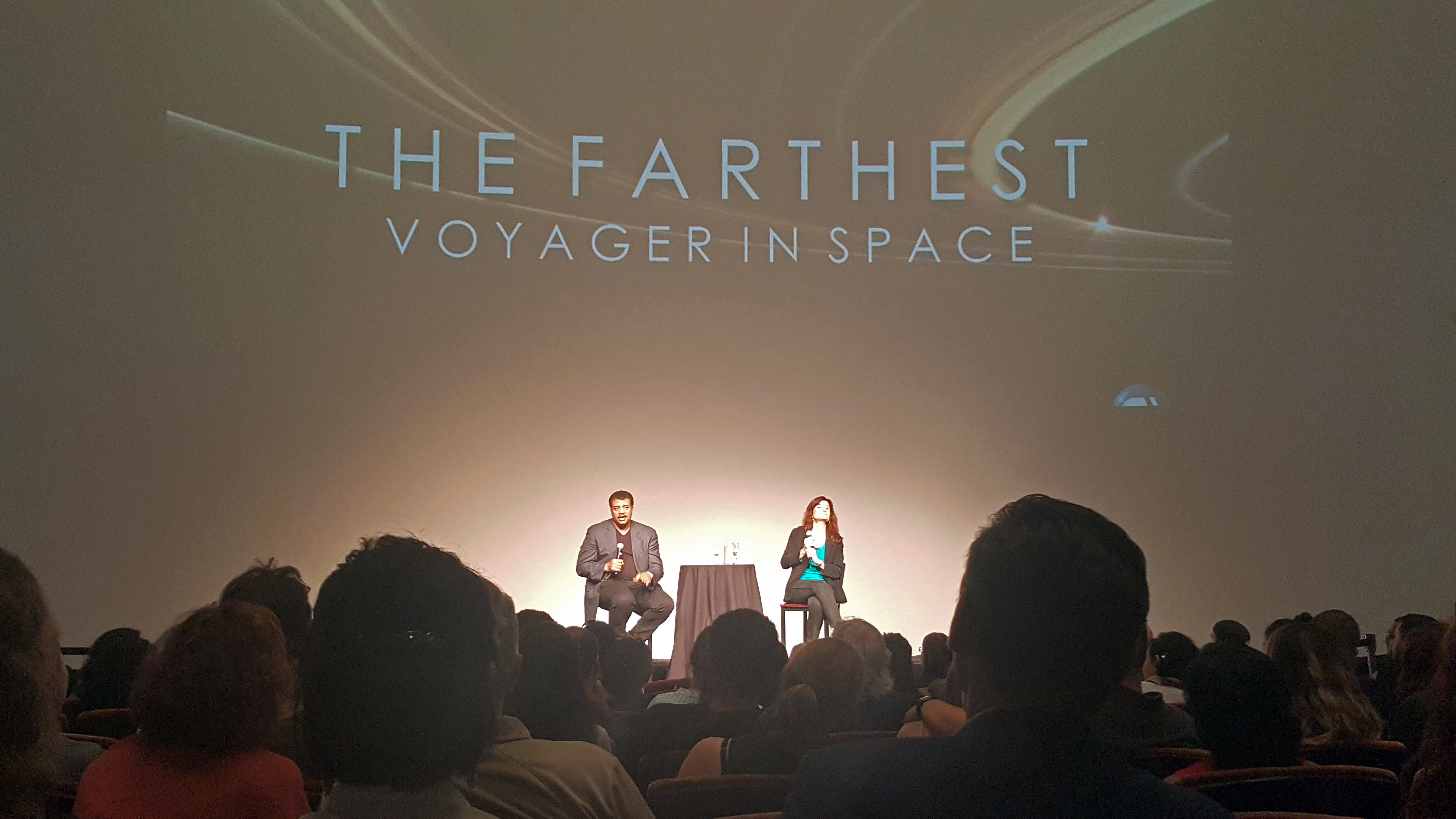'The Farthest' Returns for an Encore in November on PBS
Update: "The Farthest" rebroadcast air date has been moved to Nov. 15, rather than tonight.
"The Farthest," an amusing and inspiring new documentary about the farthest-traveling spacecraft ever launched, will return to PBS Nov. 15 for a national encore. So, if you haven't had a chance to check it out, prepare to tune in then at 10 p.m. EDT/9 p.m. CDT.
The documentary premiered on PBS on Aug. 23, three days after the 40th anniversary of the beginning of the Voyager mission. NASA launched two Voyager probes: Voyager 2 launched first, on Aug. 20, 1977, and Voyager 1 launched about two weeks later, on Sept. 5, 1977.
Now NASA's oldest operational spacecraft, the twin space probes paved the way for the future of solar system exploration, voyaging where no spacecraft has ever gone before. [40 Photos from NASA's Epic 'Grand Tour' Mission]
The twin probes set out to explore all the giant outer planets of the solar system: Jupiter, Saturn, Uranus and Neptune. Now, Voyager 1 is traveling through interstellar space, and Voyager 2 is on its way out of the solar system.
The PBS documentary offers an inside look at some of the colorful characters who played roles in the mission and some of the most epic behind-the-scenes stories from the mission control room at NASA's Jet Propulsion Laboratory (JPL) in Pasadena, California.
At a screening of the documentary at the American Museum of Natural History in New York on Aug. 9, Carolyn Porco, a planetary scientist who worked on the Voyager imaging team, recalled what it was like to spend multiple sleepless nights at JPL. Porco and her team would stay up anxiously awaiting planetary flybys and scrambling to sift through all the photos of the planets and their moons the probes sent back.
Get the Space.com Newsletter
Breaking space news, the latest updates on rocket launches, skywatching events and more!

Porco recalled the day that the Voyager team discovered liquid nitrogen on the surface of Saturn's moon Titan, with scientists frantically running around the building to spread the news. "This notion that there could be liquid nitrogen on the surface of Titan, something out of a science fiction movie, spread like wildfire through the hallways and offices of Building 264, which was where everybody was gathered during these flybys.
"During that whole episode, I felt that all of Building 264 became the starship Enterprise," Porco said, "and we had just come upon this alien world, and we were reading the signals from it, and we were hovering over it just like they do on 'Star Trek.'"
All that passion and enthusiasm is overwhelmingly evident in "The Farthest," which features interviews with many of the key players in the Voyager mission. Scientists with quirky personalities recall some of the most exciting, emotional and hilarious moments of the mission. Almost everyone interviewed in the film tears up when they talk about what the Voyager probes mean to them.
"The Farthest" is bound to bring a smile to your face, and possibly a few tears. At the very least, it's guaranteed to teach you about one of humanity's greatest achievements in exploration while keeping you entertained.
Email Hanneke Weitering at hweitering@space.com or follow her @hannekescience. Follow us @Spacedotcom, Facebook and Google+. Original article on Space.com.
Join our Space Forums to keep talking space on the latest missions, night sky and more! And if you have a news tip, correction or comment, let us know at: community@space.com.

Hanneke Weitering is a multimedia journalist in the Pacific Northwest reporting on the future of aviation at FutureFlight.aero and Aviation International News and was previously the Editor for Spaceflight and Astronomy news here at Space.com. As an editor with over 10 years of experience in science journalism she has previously written for Scholastic Classroom Magazines, MedPage Today and The Joint Institute for Computational Sciences at Oak Ridge National Laboratory. After studying physics at the University of Tennessee in her hometown of Knoxville, she earned her graduate degree in Science, Health and Environmental Reporting (SHERP) from New York University. Hanneke joined the Space.com team in 2016 as a staff writer and producer, covering topics including spaceflight and astronomy. She currently lives in Seattle, home of the Space Needle, with her cat and two snakes. In her spare time, Hanneke enjoys exploring the Rocky Mountains, basking in nature and looking for dark skies to gaze at the cosmos.









